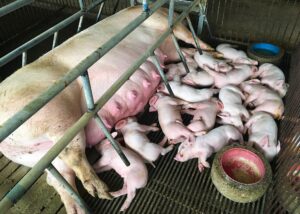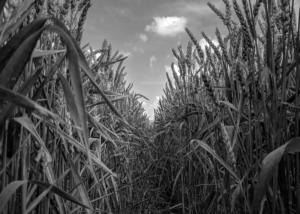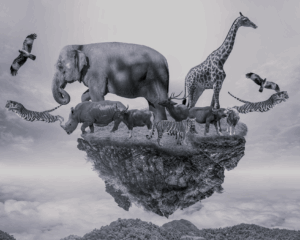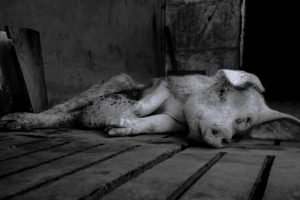The sad and torturous world of factory farmed pigs is ground zero in the “agricultural intensification” that some tout as the answer for feeding a growing world population. Intensification relies on technological advances to propel increasing yields per unit of land, labor, and capital. Industrial animal agriculture has been on this road for a long time. For animals, it has meant more disease and more suffering.
For years, industrial pig operations have been “increasing efficiency” by genetically breeding sows to bear bigger litters. Since 1970, the average number of piglets per litter has grown about 60%. In just the last 20 years the average number of conceived piglets has grown from under 12 to almost 16, with 18-20 piglets not uncommon.
However, genetics has not increased a sow’s uterine capacity, nor her ability to provide milk for so many babies. Almost exactly in step with litter size, sow mortality is on the rise. 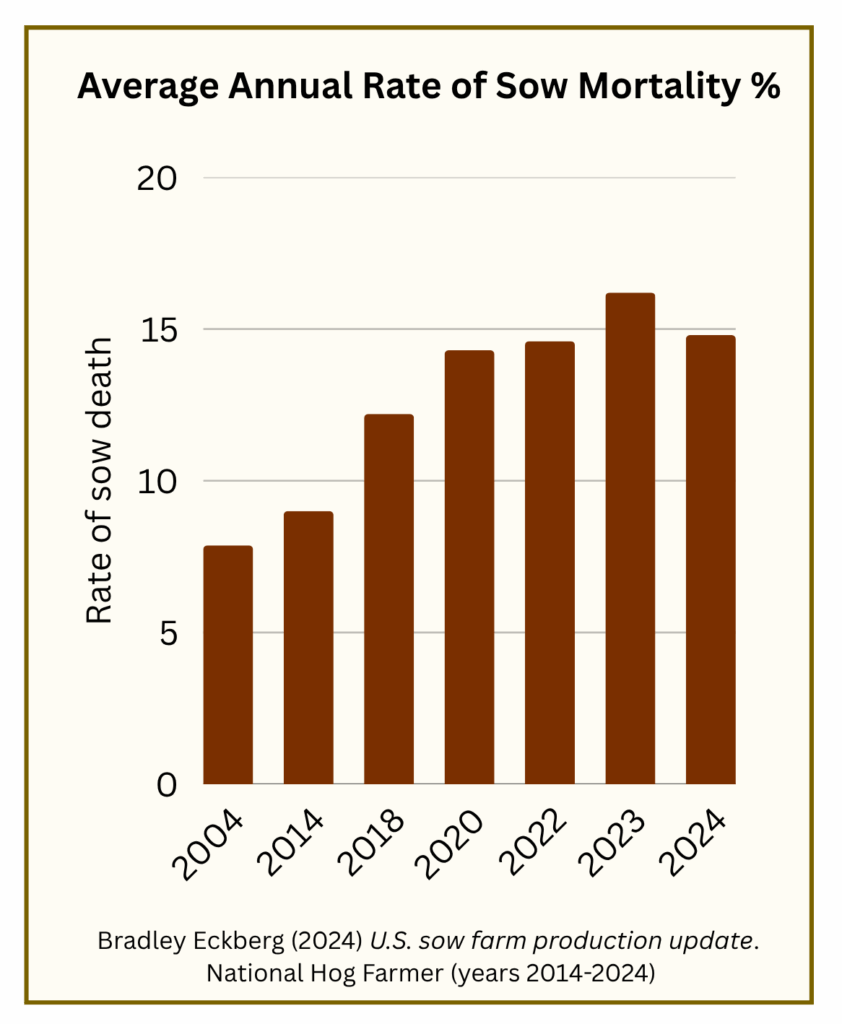 Industry researchers, however, seem unwilling to recognize the connection, suggesting that these increased deaths should be addressed with nutrition or further genetic manipulation. For economic reasons the efficiency gains of larger litter sizes are non-negotiable.
Industry researchers, however, seem unwilling to recognize the connection, suggesting that these increased deaths should be addressed with nutrition or further genetic manipulation. For economic reasons the efficiency gains of larger litter sizes are non-negotiable.
There is a direct relationship between increasing litter sizes and longer birthing time which causes more pain and stress for the sows. Also increasing are reproductive problems including difficult births, infections, and especially uterine and vaginal prolapse. Now prolapse, i.e., organs displaced, often outside the body, is a leading cause of sow death and culling, only slightly less common than “lameness.”
The sow’s successive pregnancies without rest periods and her larger litters have also increased the suffering of her piglets, with more low birth weights, more stillborn births, and higher rates of piglet deaths prior to weaning. On average, sows have about 14 functional teats, so there is strong competition for colostrum and milk. Underweight piglets who do not win access will give up fighting after unsuccessful attempts. Within two or three days they will starve to death. Many are oxygen deprived during delivery and die of cardiac or respiratory disease. Others suffer from hypothermia and seeking warmth close to their mothers, are at greater risk of being crushed.
The pre-wean suffering of piglets also includes a more standardized set of torturous procedures. If a male piglet stays alive for a few days, he will be castrated. For both males and females, tags are affixed to their ears with a hole punch, most of their tails are cut off, and many will have several teeth sheared to about half their size with a pair of metal clippers. All without any pain relief. Of the piglets born alive, about 15% will die in their crowded farrowing crates before weaning at 3 weeks.
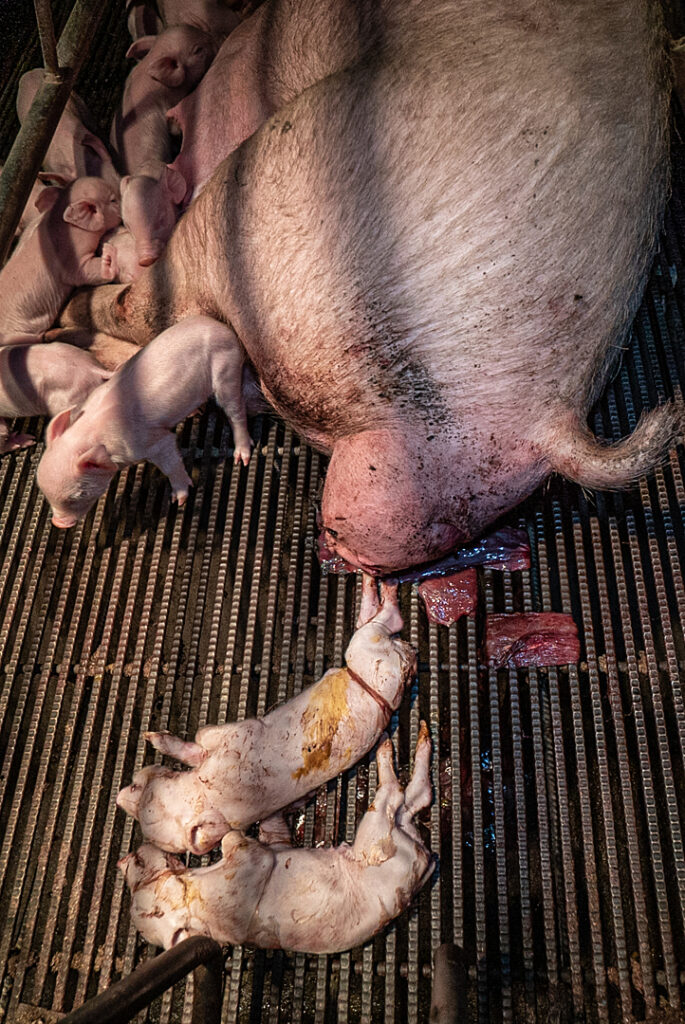
It’s an ugly picture. This is the result of agricultural intensification. Breeding captive animals to bear bigger and bigger litters. More sow diseases and deaths, more mummified fetuses, more stillborn births, and more pre-wean piglet deaths. Faster production by re-impregnating sows within days of weaning (artificially and invasively).
For the industry, increasing mortalities are not critical if the net number of surviving pigs increases at a faster rate than the piglets who die. Pounds of delivered live meat divided by cost of inputs is the final line item. Defective animals are disposable. And although there is an industry awareness of the increasing mortality issue, it has generated little interest in improving sow or piglet welfare.
Rather, the push is to double down on intensification with technology. Find the genetic key to organ prolapse, tinker with diets and fatty acids, breed sows to have more teats.
It’s hard to understand how our society can condone this level of animal abuse. The industry’s technological “advances” have only brought more suffering. Intensification cannot be the answer.
For further info and references see,
Pig Breeding Life
Pig Housing Conditions & Space Allotments
